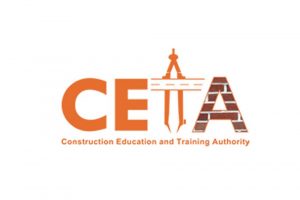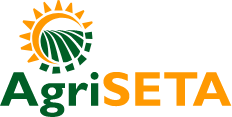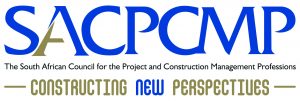African Standards of SHEQ Consulting and Training
Training and facilitation


Health and Safety
Training Programmes we offer:
Introduction
This course is for persons who are required to assess the emergency situation, provide basic Life Support and basic First Aid in order to stabilise patients prior to transfer to the emergency services.
Key learning Areas
- Understanding of emergency scene management.
- Understanding of elementary anatomy and physiology.
- Assessing an emergency situation.
- Applying basic First Aid procedures to life-threatening situations.
- Treating common injuries.
Introduction
This course will enable participants to provide primary emergency care (first aid) in response to an induced occupational risk or any health emergency in their specific workplaces. This covers emergency protocols that need to be followed to ensure the correct and legal first aid is given when responding to any emergency situation.
Key Learning Areas- Principles of primary emergency care in the workplace.
- Basic preparations for health emergencies in the workplace.
- Assessing and managing an emergency scene in the workplace.
- Conducting secondary assessment of the sick and/or injured person.
- Administering CPR procedures.
- Conducting intermediate primary emergency life support procedures for adults, children and infants according to current international protocols.
Introduction
This course was designed to enable the first responder to react to emergencies at an advanced first aid level, until the arrival of more professional emergency personnel. In essence, this course gives the learner, leadership skills to deal with emergency situations.
Key Learning Areas
- Principles of advanced first aid in emergencies.
- Preparing to deal with sudden illness or emergency.
- Assessing and managing an emergency scene/disaster.
- The anatomy and physiology of the human body systems in terms of injury and sudden illness.
- Conducting advanced primary first aid life support for adults, children and infants according to accepted current protocols.
- Managing serious ailments and injuries.
Introduction
This course aims to provide knowledge, skills, and confidence when responding to a fire emergency. In addition, it provides knowledge for the proper use of emergency equipment inorder to enhance survival in a fire emergency.
Key Learning Areas- Procedures for dealing with fires.
- Types of fire, its context and selection of the appropriate firefighting procedures.
- Identifying, selecting and checking appropriate firefighting and safety equipment.
- Fighting containable/extinguishable fires.
- Procedures for retreating from a fire site.
- Fire handing-over procedures to appropriate personnel.
- Report/record status of fire and equipment.
Introduction
This course will enable learners to acquire knowledge and skills on how to identify probable causes of fires, how to prevent them, how they are detected and how to apply emergency firefighting procedures.
Key Learning Areas
- Basic knowledge pertaining fires.
- Causes and prevention of workplace fires.
- Fire detection methods.
- Fire preparedness methods and procedures.
- Operating advanced firefighting equipment.
Introduction
This course gives the learner skills and knowledge needed to ensure workplace compliance with the South African Occupational Health and Safety Act. Any learner who successfully completes this course will be able to effectively implement best practices for health and safety that are legally compliant and applicable to their workplace.
Key Learning Areas
- Roles and responsibilities of employees and employers in health and safety.
- Identification and management of potential occupational hazards.
- Safety indicators and emergency procedures.
- Functions and application of Personal Protective Equipment.
- Developing, implementing and maintaining workplace health and safety programmes.
- Applying health and safety principles to work areas.
- General interpretation of Health and Safety legislation.
Introduction
The person who successfully completes this course will be able to understand the objectives and statutory requirements pertaining to health and safety in the workplace. That is, he or she will be able to explain and apply the rights, powers, functions and duties of the workplace health and safety representative.
In essence, this course allows successful learners to participate in the safety, health and environmental structures and measure these activities according to health, safety and environmental requirements.
Key Learning Areas
- Framework of workplace health and safety legislation pertaining to health and safety representatives.
- Legislative and general requirements to conduct safety, health and environmental representation activities at a working place.
- Functions and responsibilities for safety, health and environmental structures in the workplace.
- Addressing safety, health and environment related issues within the scope of authority.
Introduction
Successful participants will be able to work safely at heights in the workplace with minimal supervision.
Key Learning Areas
- Plan and prepare to work safely at heights.
- Types of equipment used when working at heights.
- Selecting, inspecting and working within the limitations of portable ladders and platforms.
- Selecting and installing fall protection equipment.
- Developing a fall protection plan and fall arrest plan.
- Fall arrest rescue techniques.
- Managing the safety of personnel working at heights.
Introduction
This course has been designed to introduce the learner to the importance of hazard identification on a daily basis. Hazards and risks are part of every workplace and require a collaborative approach from all employees to ensure safety is achieved. The learner completing this training module will receive training in the principles of hazard identification, risk assessment and risk planning.
Key Learning Areas
- Legal and organisational requirements for conducting risk assessments.
- Preparing to conduct a continuous risk assessment.
- Identifying and assessing potential hazards at a worksite.
- Development of strategies to address potential worksite hazards.
Introduction
This course is designed for learners who are involved or intend to be leaders in the construction industry. At the end of this course, successful learners will attain leadership and management skills that are crucial when managing construction team’s inorder to achieve their objectives.
Key Learning Areas
- Identify labour requirements
- Recruit, select and induct team members.
- Receive and issue instructions.
- Motivate teams and monitor performance.
- Train, coach and develop team members.
- Implement disciplinary and grievance procedures.
Introduction
The aim of this course is to provide all course candidates with a firm understanding of the current legislation regarding confined space entry and safe work in a confined space. This also includes being able to;
• Identify the types of confined spaces and their hazards,
• enter a confined space and apply safe and correct procedures for entry into, working within, exiting and,
• Applying emergency procedure for confined space operations.
- Hazards associated with closed spaces.
- Preparing to enter and exit closed spaces.
- Protective clothing and equipment for closed space.
- Procedures and guidelines when working in closed spaces
- Plan and Implement emergency procedures.
Introduction
Learners who successfully complete this course will be able to demonstrate the ability to conduct investigations into workplace incidents. The competency includes all the activities required to successfully conduct incident investigations.
Key Learning Areas
- Requirements and procedures for conducting an investigation into workplace incidents.
- Prepare to gather data for the investigation.
- Gather and evaluate data.
- Performing post-investigation functions.
- Writing incident reports.
Introduction
This workshop is designed for participants who have little or no working knowledge to perform their duties and obligations as Flag persons. It is also designed to be a refresher for experienced Traffic Control Personnel.
Key Learning Areas
- Identifying risks to health and safety at road sites.
- Preparing a site for road works.
- Selecting and displaying the correct flagging equipment and temporary signage.
- Conducting flagging signals to control traffic.
- Procedures for using flagging equipment.
Introduction
This course gives learners a competence level that enables them to carry out periodic inspections of ladders, step ladders and combination ladders in accordance with the construction regulations and related legislations.
Key Learning Areas
- Requirements to safely perform work in elevated positions.
- Procedures and requirements to correctly inspect, care for and store ladders.
- Safety, health and environmental principles with regards to working platforms, ladders, scaffolds and walkways in elevated positions.
- Recording inspection data and writing reports.
- Dealing with non-compliances.
Introduction
Learners who successfully complete this course will acquire the knowledge and skills required by the industry to function as a scaffold erector. This includes the ability to safely and efficiently deploy the required resources to erect and dismantle access scaffolding.
Key Learning Areas
- Interpret basic drawings and instructions for the erection of access scaffolding.
- Coordinate resources for the erection of access scaffolding.
- Erect access scaffolding.
- Dismantle access scaffolding.
- Safety principles when erecting and dismantling scaffolding.
Introduction
This course will enable learners to acquire the necessary knowledge and skills to inspect scaffolding in compliance with the South African National Standards (SANS) 10085. The qualifying learner will be able to function as a scaffold inspector.
Key Learning Areas- Types of access scaffolding, applications, limitations, design and compliance issues.
- The role and responsibilities of the inspector.
- Reading and interpreting drawings, client requirements and other specifications.
- Inspecting and handover access scaffolding.
- Recording inspection data.
- Managing non-compliances.
Introduction
This course will enable learners to keep their work areas safe and productive when carrying out their work duties.
Key Learning Areas
- The purpose of safety equipment and procedures
- The purpose of demarcated areas, emergency stops, exits and first aid stations.
- Using personal protective equipment.
- Performing housekeeping duties in a work area.
- Identifying and responding to unsafe or potentially unsafe conditions, incidents or acts that may occur.
Introduction
This course was designed to help employers and employees to develop safe and effective methods for stacking and storing material so as to meet their obligations under health and safety legislation.
Key Learning Areas
- Plan and prepare for stacking and storage.
- Receive, verify and store materials.
- Pallet construction methods and techniques.
- Sizes and shapes of stacks.
- Methods and techniques for stacking different types of goods.
- Safety procedures when stacking.
Introduction
On completion of this course, participants will be able to undertake the movement of plant equipment, steel erection, use hoists (including mast climbing hoists), undertake the placement of pre-cast concrete, use safety nets and static lines, install perimeter safety screens, shutters and cantilevered crane-loading platforms.
Key Learning Areas
- Determining task and job site requirements.
- Characterising the load.
- Types of rigging equipment and their uses.
- Specifying, selecting and inspecting rigging equipment.
- Lifting manoeuvring and moving load.
- Managing emergency situations during rigging and slinging.
Introduction
This course was designed for learners who have no or little knowledge on how to operate a jack hammer safely. This course is also a refresher to qualified jack hammer operators.
Key Learning Areas
- Identify and select a jack hammer suitable for a work task.
- Precautions when using a jack hammer.
- Operating a jack hammer safely.
- Maintaining a jack hammer.

Technical Construction Courses
Training Programmes we offer:
Introduction
This course is for persons who are required to assess the emergency situation, provide basic Life Support and basic First Aid in order to stabilise patients prior to transfer to the emergency services.
Key learning Areas
- Understanding of emergency scene management.
- Understanding of elementary anatomy and physiology.
- Assessing an emergency situation.
- Applying basic First Aid procedures to life-threatening situations.
- Treating common injuries.
Introduction
This course will enable learners to have practical skills on how to prepare and lay different types of paving blocks and kerbs.
Key learning Areas
- Interpreting construction drawings and specifications.
- Tools and equipment for paving surfaces.
- Preparing work area for paving.
- Selecting materials, tools and equipment to perform specified paving work.
- Mixing filler, substrate layer and bedding materials for precast block paving.
- Laying precast block paving.
- Cutting edges of precast block paving according to specifications.
- Techniques for laying different types of kerbs.
Introduction
At the end of this course, participants will be able to build manholes and chambers in accordance with defined specifications.
Key learning Areas
- Types of manholes and chambers
- Interpreting drawings and specifications.
- Tools and equipment for manhole or chamber construction.
- Preparing a base for a manhole or chamber.
- Constructing a manhole or chamber.
- Completing the manholes and chamber.
Introduction
This course provides a detailed introduction to the design and construction of road surfaces, with a focus on asphalt and spray sealing. It demystifies the terminology used in the industry and provides an overview of all matters associated with bituminous surfacing for people with limited exposure to the industry. It provides participants with a solid foundation on which to build their knowledge as they progress through the industry.
Key learning Areas
- Identify different asphalt mixes and their properties.
- Technology for applying hot mix asphalt.
- Preparing a road layer to receive premix asphalt.
- Applying a premix asphalt layer.
- Equipment and tools used for laying asphalt and their proper uses.
- Completing a premix asphalt layer.
Introduction
Numerous claims are laid against road authorities every year for vehicle damage caused by potholes and even for serious vehicle accidents resulting from excessively large potholes. Potholes have always been a problem on sealed/paved roads. This course will enable participants to have skills and knowledge on how to;
- Repair potholes and
- Resurface damaged bituminous road layers.
Key learning Areas
- Causes of potholes in bituminous road surfaces.
- Types of potholes and their causes.
- Importance of road maintenance.
- Preparing to repair or resurface a road layer.
- Tools and equipment for road maintenance.
- Techniques for repairing different types of potholes.
- Applying a bituminous seal.
- Completing a bituminous seal operation.
Introduction
Assembling and tie-ing reinforcing cages and using the correct materials and methods for fixing reinforcing must be done in a safe and efficient manner. This course will enable learners to demonstrate knowledge of types of tools, equipment and personal protective equipment, Steel fixing sequence and SABS requirements for the different types of ties.
Key learning Areas
- Checking work area for hazards.
- Checking scaffolding for adequacy.
- Identifying and preparing reinforcing material.
- Preparation of spacing templates.
- Fixing reinforcing.
- Securing all ties.
- SABS requirements for the different types of ties to be used for given situations and types of bars.
- Techniques for preparing spacing templates.
- Occupational Health and Safety requirements for the erection of scaffolding (size and positioning).
- Techniques for identifying faults to base and starter bars.
- Safety precautions in reinforcing.
- consequences of good and poor workmanship are described in terms of production, cost, safety and quality of product
Introduction
This course will enable learners to conduct priming and painting tasks on building surfaces. The skills, values and knowledge reflected in this programme are required by people in the field of building and civil construction.
Key learning Areas
- Preparing materials, tools and equipment for applying primer and paint.
- Filing imperfections and surfaces.
- Prime surfaces for painting.
- Coat surfaces with paint.
- Safety precautions when priming and painting surfaces.
Introduction
Successful completion of this course will enable learners to plaster surfaces. The skills, values and knowledge reflected in this programme are required by people in the field of building and civil construction.
Key learning Areas
- Selecting and maintaining materials, tools and equipment for specified plastering work.
- Preparing work areas for plastering.
- Batching and mixing plaster.
- Applying plaster to various types of surfaces.
- Installing mouldings and repair damaged plaster.
- Implementing emergency safety procedures when required.
Introduction
Assembling and tie-ing reinforcing cages and using the correct materials and methods for fixing reinforcing must be done in a safe and efficient manner. This course will enable learners to demonstrate knowledge of types of tools, equipment and personal protective equipment, Steel fixing sequence and SABS requirements for the different types of ties.
Key learning Areas
- Selecting and maintaining materials, tools and equipment for specified plastering work.
- Checking work area for hazards.
- Checking scaffolding for adequacy.
- Identifying and preparing reinforcing material.
- Preparation of spacing templates.
- Fixing reinforcing.
- Securing all ties.
- SABS requirements for the different types of ties to be used for given situations and types of bars.
- Techniques for preparing spacing templates.
- Occupational Health and Safety requirements for the erection of scaffolding (size and positioning).
- Techniques for identifying faults to base and starter bars.
- Safety precautions in reinforcing.
- consequences of good and poor workmanship are described in terms of production, cost, safety and quality of product.
Introduction
This short skills programme will be useful to people who work in the civil construction industry. People credited with this unit standard are able to prepare bedding, assemble and complete gabion baskets.
Key learning Areas
- Reasons for installing gabions.
- Checking the work area for hazards.
- Identification and preparation of necessary tools, equipment and personal protective equipment.
- Placing filter fabric.
- Assembling, anchoring and bracing of gabion baskets.
- Placing rocks in the gabion basket.
Introduction
The aim of this course is to provide all course candidates with a firm understanding of the current legislation regarding confined space entry and safe work in a confined space. This also includes being able to;
• Identify the types of confined spaces and their hazards,
• enter a confined space and apply safe and correct procedures for entry into, working within, exiting and,
• Applying emergency procedure for confined space operations.
Key Learning Areas
- Hazards associated with closed spaces.
- Preparing to enter and exit closed spaces.
- Protective clothing and equipment for closed space.
- Procedures and guidelines when working in closed spaces
- Plan and Implement emergency procedures.

Education and Training
Training Programmes we offer:
Introduction
This training programme was designed for those who intend to assess the competence of learners against outcomes of a particular unit standard or qualification. Those who successful complete this programme will be able to conduct outcome-based assessments within their fields of expertise.
Key learning Areas
- Plan and prepare for assessment
- Prepare candidates for assessment
- Conduct assessment and document evidence
- Evaluate evidence and make assessment judgments
- Provide feedback to relevant parties
- Review assessment
Introduction
The facilitator training programme is intended for those who intend to deliver winning training presentations in their fields of expertise. Those who successfully complete this programme will be able to facilitate a well-structured and varied programme of learning, implement the principles of OBE, use a range of teaching methods and techniques.
Key Learning Areas
- Plan and prepare for a learning session
- Apply facilitation methods and techniques when delivering a learning presentation
- Evaluating a programme of learning (series of learning events)
Introduction
This training course is meant for people who or intend to conduct internal or external moderation of outcomes-based assessments. Those who have achieved this unit standard will be able to moderate assessments in terms of the relevant outcome statements and quality assurance requirements.
Key Learning Areas
- Plan and prepare for moderation
- Conduct moderation
- Advise and support assessors
- Report, record and administer moderation
- Review moderation systems and processes
Introduction
This is a crucial function in facilitating the process of developing, implementing, monitoring and reporting skills plans, whether at sectoral or organisational level. These functions can only be performed if the practitioner has the necessary skills and expertise.
The aim of this 5 day programme is to equip practitioners with the necessary knowledge, skills and attitudes to facilitate the skills development processes in their workplace(s) as prescribed in the Skills Development Act, 1998.
It will be especially useful to Human Resource Development officers who have taken on skills development facilitation roles and include Skills Development Facilitators, Training Managers, Training Co-ordinators, Learning Consultants and other Human Resource Development practitioners.
Providing information and advice regarding skills development and related issues
- advise on the alignment of skills development practices
- advise on the promotion of skills development
- investigate and analyse the status of the learning culture
- develop and implement strategies for the promotion of a learning culture
- plan, organise and conduct a skills analysis process
- produce and verify matrix of outcomes
- analyse current and required skills in line with organisational strategies
- develop a skills profile and define a skills gap
- establish skills priorities
- develop training and development plans
- identify and prioritise learners` learning requirements
- plan and organise learning interventions
- review and report on learning interventions
- Collate and store data related to skills development
- Provide information related to skills development
- Contribute to the improvement of skills development data systems and procedures
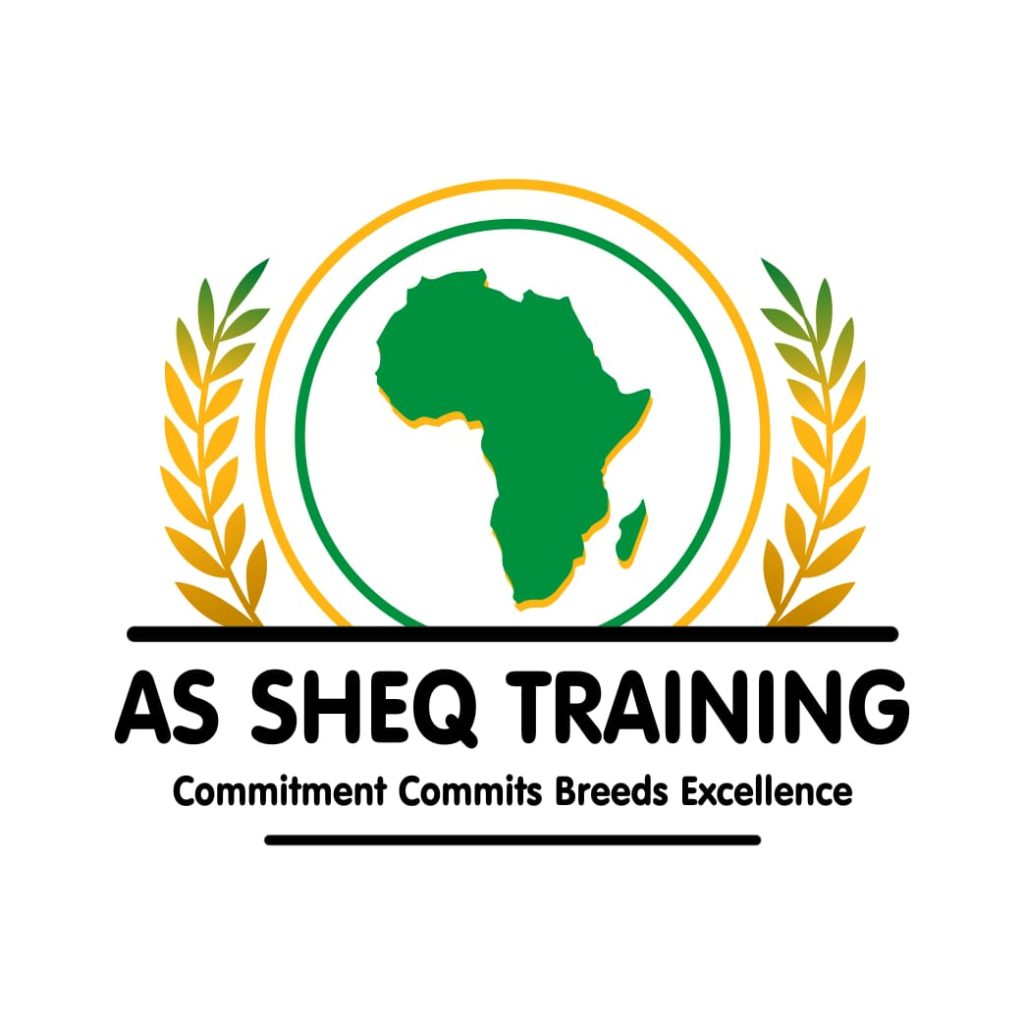
Information Technology
Training Programmes we offer:
Introduction
This training course is meant for people who desire to have basic knowledge on how to operate a computer.
Key learning Areas
- Hardware elements of a computer
- Types of computers
- Configuring a computer
- Computer operating systems functions
- Operating system utilities
- Starting and shutting down a computer
Introduction
This programme introduces the learner to Microsoft Word. Learners who successfully complete this programme will be able to type and format documents using Ms Word.
Key Learning Areas
- Create documents
- Work with multiple documents
- Format text
- Format paragraphs
- Format pages
- Format documents
- Use templates
Introduction
This programme gives the learner skills and knowledge on how to enhance document appearance using Ms Word.
Key Learning Areas
- Creating and editing tables
- Format a table
- Create and edit columns in a document
- Format columns in a document
Introduction
This programme exposes the learner to advanced features that relate to Ms Word.
Key Learning Areas- Merging documents
- Working with large documents
- Macros
- Drawing
- Watermark
- Document mapping

Management and leadership development
Training Programmes we offer:
Introduction
This course will enable learners to gain insight into the role of leadership within a work context, and thus providing them with the skills and knowledge to add value their leadership jobs.
Key learning Areas
- Concept of leadership.
- Differentiating between leadership and management.
- leadership theories and application.
- Roles of leaders in organisations.
- Qualities of good leaders.
Introduction
Effective strategy formulation skills are highly prized in corporate leaders and they’re absolutely essential during a recession. The ability to develop operational business strategies and then take those business strategies from plan to action (or to rethink them on short notice) sets true leaders apart from their peers. Forward-looking strategy formulation can make the difference between a profitable business and one that stagnates.
Key Learning Areas
- Concept of strategic planning in managing business performance.
- Role of the various organisational structures in business performance.
- Supervising and monitoring expenditure.
- Analysis of marketing objectives related to business performance.
- Identifying and rectifying performance problems occurring in own business.
- Development of business attributes in a specific context to enhance performance.
Introduction
Our ability to deal effectively with our emotions in the work place is critical to our success and the success of our organisations. As the environment changes it makes more and more demands on our cognitive, emotional and physical resources, Emotional Intelligence is increasingly critical as a skill set. Emotional Intelligence strategies combine with native intelligence increase our ability to successfully manage the constant challenges from customers and our business associates
Key Learning Areas
- Importance of using Emotional Intelligence.
- Creating an environment for productive work relationships.
- A model to guide your responses to difficult and challenging situations.
- Self-motivation while tempering negative responses.
- Team communication skills for running effective meetings, decision-making, and creative problem-solving.
- One-on-one communication skills for constructive feedback and conflict management.
- The confidence boosting strategies to deal with resistance and negativity.
- leadership qualities that promote trust, motivation, and commitment to results.
Introduction
Conflict is an inevitable part of our lives but how we view it and how we deal with it can turn it from being an unpleasant experience into one where we learn and grow. This course will help you to understand how conflict can be positive and will introduce you to tools and techniques that will assist you to effectively deal with conflict situations.
Key Learning Areas
- Main sources of conflict
- Techniques to manage conflict.
- Implementing a strategy to resolve conflict.
- Developing the attributes of a good conflict manager.
Introduction
Regardless of your industry, the size or structure of your organization, the ability of managers and leaders to keep their people working at peak performance is critical. There are many strategies and techniques available to manage peak performance in an organization, but without the foundation and core emotion of feeling motivated, talented workforces will not be productive. In this course, you will acquire the skills and tools to empower and motivate yourself and your employees.
Key Learning Areas
- Concept of motivation.
- Importance in enhancing performance levels.
- Theories of motivation and application.
- Techniques to enhance self motivation and leadership performance.
- Strategies to motivating others.
Introduction
As a manager you endeavour to create an ordered path through the chaos of a fast-paced, constantly changing environment to achieve business success. You are expected to understand business objectives, develop and implement plans, measure progress against time, cost and business requirements, while balancing priorities among different and potentially conflicting stakeholder groups. Identifying, analysing, and appropriately responding to risk in a proactive fashion, rather than waiting for the overwhelming avalanche of issues, is an essential skill of the professionally competent manager. This course is for you, providing a practical approach to managing risk and detailing and implementing an effective project risk management plan.
Key Learning Areas
- Concept risk management.
- Impact of risk on business.
- Identification of risks.
- Assessment of risks.
- Developing and implementing risk management procedures and plans.
- Monitoring and assessing risk management procedures.
Introduction
Knowledge transfer is an ongoing process of sharing knowledge and information with others. As organizations prepare for the potential mass departure of individuals retiring or rotating to new positions, we seek to preserve the knowledge that these employees have collected.
Key Learning Areas
- Concept and principles of knowledge management.
- Developing and using knowledge management system.
- Presenting and communicating information as part of a knowledge management network.
- Knowledge management principles, techniques and tools.
Introduction
Knowledge transfer is an ongoing process of sharing knowledge and information with others. As organizations prepare for the potential mass departure of individuals retiring or rotating to new positions, we seek to preserve the knowledge that these employees have collected.
Key Learning Areas
- Concept of diversity.
- Forms of diversity.
- Effects of diversity.
- Ideology of superiority.
- Factors manifested as discrimination.
- The roles of institutional and personal power in diversity issues.
- Develop tools to counter discrimination.
- Framework to manage diversity in the workplace.
- Culture of equality.
Introduction
Relationship management aims to create a partnership between the organization and its audience rather than considering the relationship merely transactional. For example, consumers who feel that a business responds to their needs are more likely to continue using the products and services that a business offers. This course shall give the learner skills and expertise on how to create and maintain relationships with stakeholders.
Key Learning Areas
- Concept of relationship building.
- Roleplayers and stakeholders in business.
- Strategies to manage a variety of roleplayers and stakeholders.
- Creating an optimum advice environment.
- Developing an institutional accountability in managing relations with stakeholders and communities.
- Dynamics in managing relationships.
- Development of a sound communications strategy to enhance relations with key stakeholders and communities.
Introduction
Change is a constant in many of our lives. All around us, technologies, processes, people, ideas, and methods often change, affecting the way we perform daily tasks and live our lives. Change management entails thoughtful planning and sensitive implementation, and above all, consultation with, and involvement of, the people affected by the changes. If you force change on people normally problems arise. This course shall give learners skills and expertise on how to manage change.
Key Learning Areas
- Importance of change management.
- Planned change and reactive change
- Models for effective change management and its management
- Managing resistance to change
- Developing a change management programme
- Competencies of an effective change agent

Office administration
Training Programmes we offer:
Introduction
Organisations cannot function without written reports. Reports are important in organisations because they provide vital information that can be used for everyday operations and decision making. Inorder for reports to be useful, they must be written in the correct format and using the appropriate writing aids. If you are involved in correcting reports for your manager or perhaps decide on the content and actually write the report, then this is a training workshop that you must not miss.
Key learning Areas
- Types of reports
- Planning a report
- Writing a report
- Editing a report
- Presenting report
Introduction
In this course, students will practice techniques that will help them achieve more effective use of their time so that they can direct their energy towards the activities that will further their professional and personal goals.
Key Learning Areas
- Importance of time management
- Principles of time management
- Creating work plans
- Implementing efficient work plans
- Time management techniques
- Managing time wastages

Project management
Training Programmes we offer:
Introduction
This course offers students an overview of the application of knowledge, skills, tools, and techniques to project activities for achieving project requirements. It helps student understanding of how project management is accomplished through the application and integration of the project management processes of initiating, planning, execution, monitoring, controlling and closing. In this course, we introduce the concept of project management, discuss the role of project manager, identify and orient students with the issues related to planning the project, schedule and project control and evaluation and management of project team.
Key learning Areas
- Background to project management.
- Needs analysis and project identification.
- Project planning.
- Project implementation.
- Project evaluation, monitoring and control.
- Project closure.
Introduction
The objective of the project supervision is to guarantee good-quality implementation of the project with optimal costs pursuant to the contract agreement, technical standards and norms. In this course learners shall gain useful skills and expertise to lead and manage projects.
Key Learning Areas
- Organisational structures.
- Supervising and monitoring a project team.
- Reporting progress on a project.
- Identifying and rectifying problems occurring in a project.
- Setting up, running and closing a project.
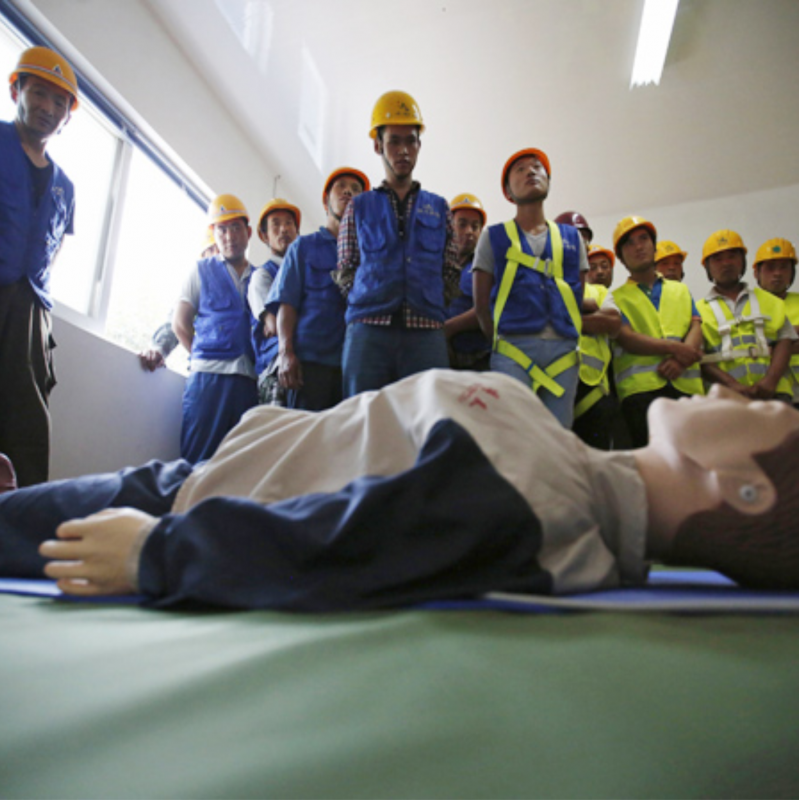
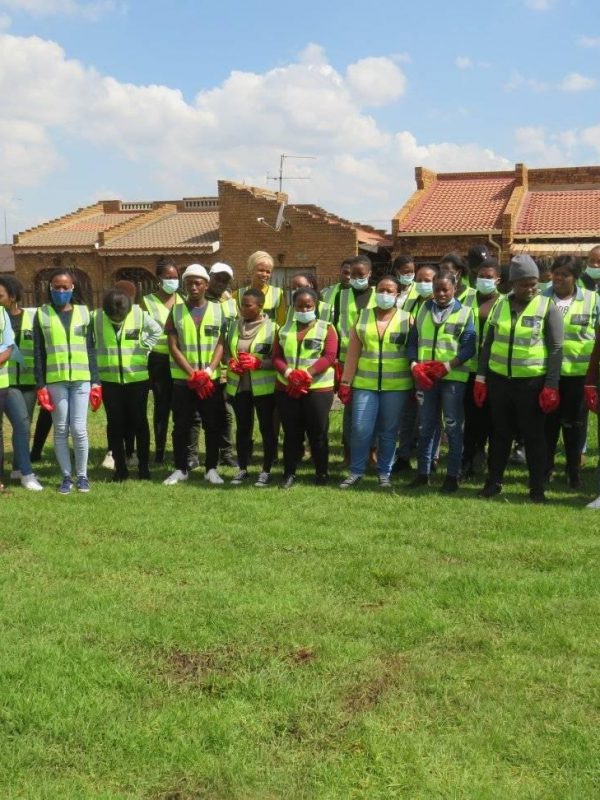
AS SHEQ Consulting and Training had partnered with SM Training in initiating skills programmes for Construction. SM TRAINING is a CETA Accredited Training Provider.
CETA, LG Seta, MICT Seta, Department Of labour, South African Institute of Safety and Health (SAIOSH)
Accreditation
